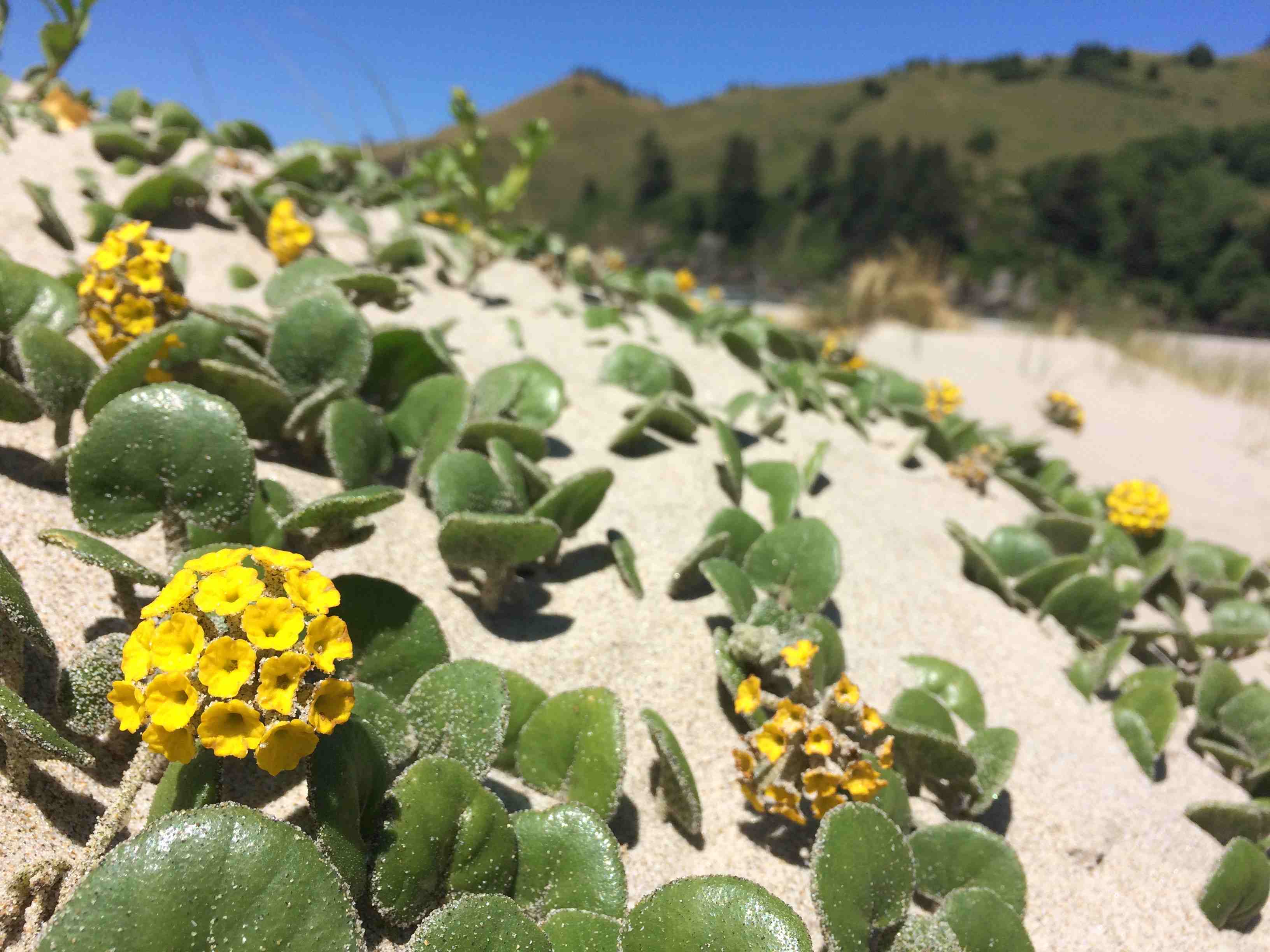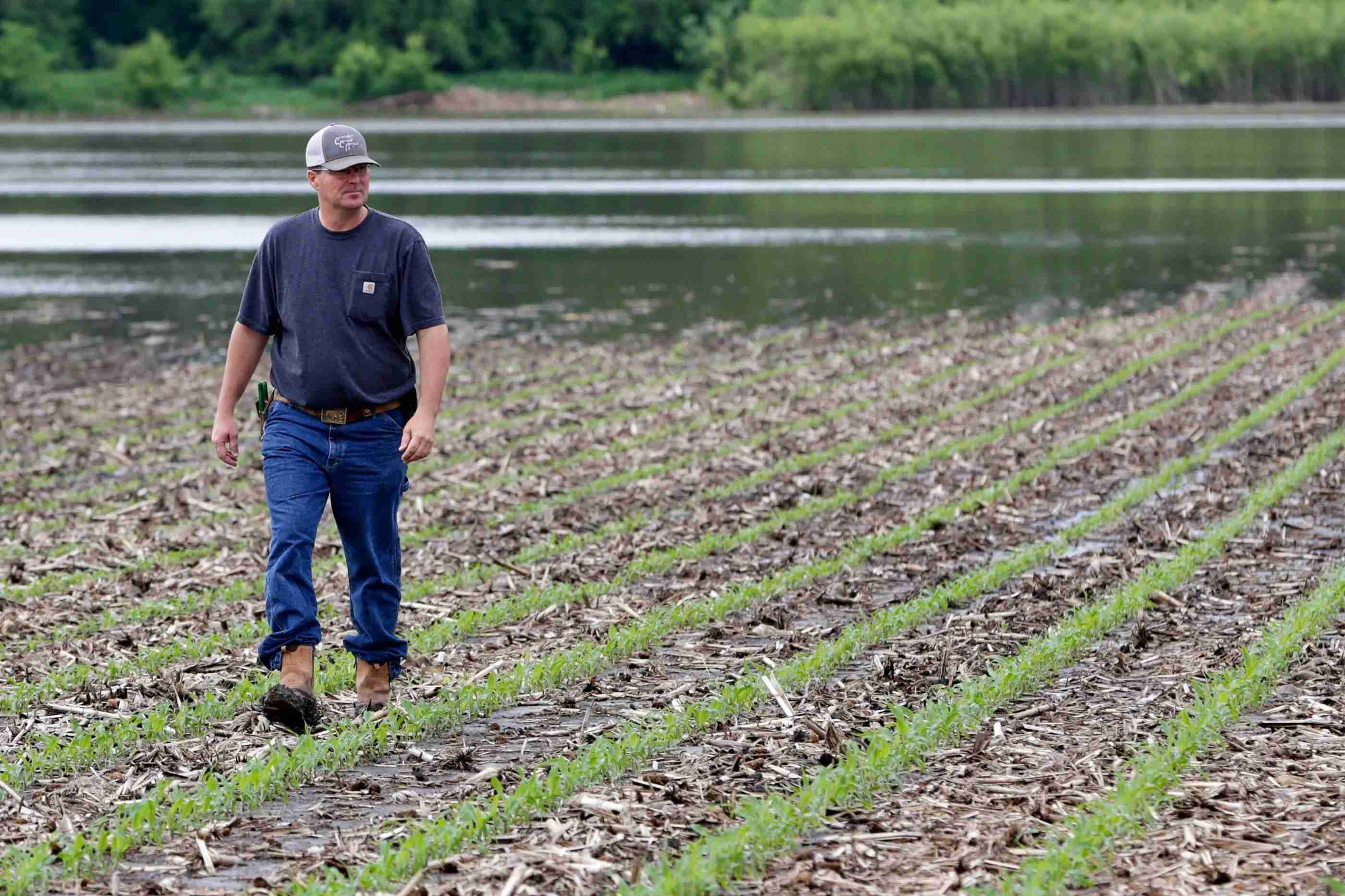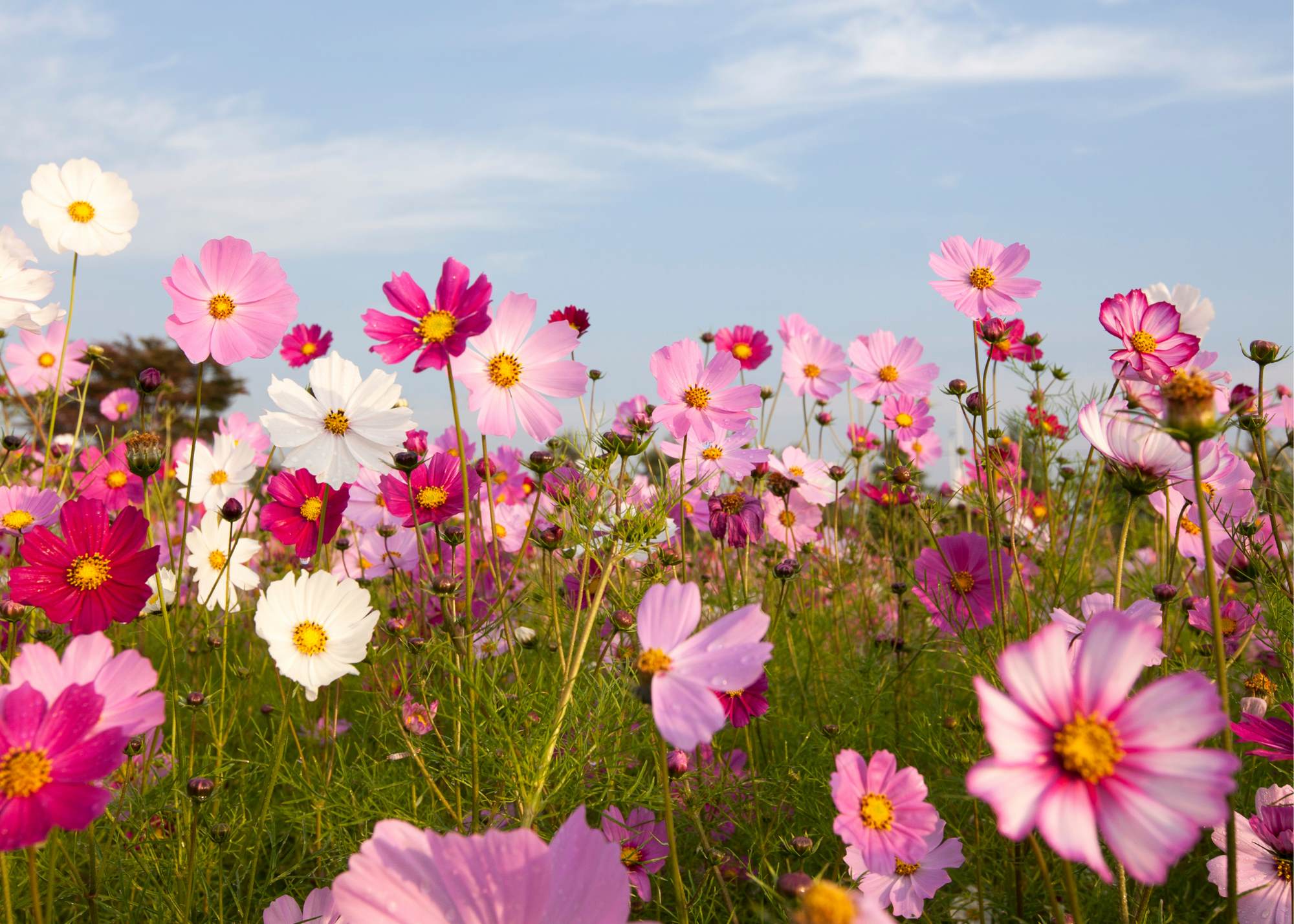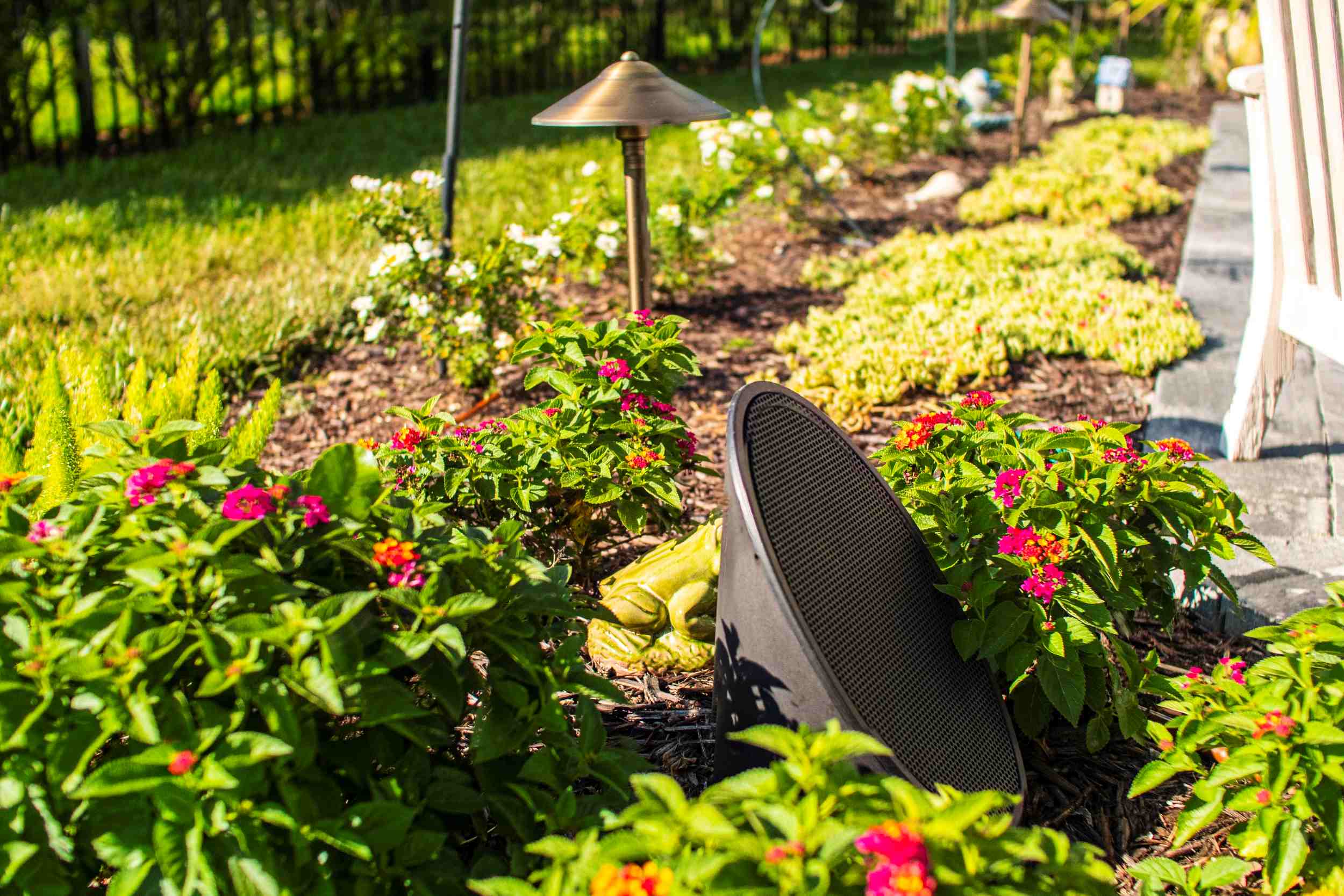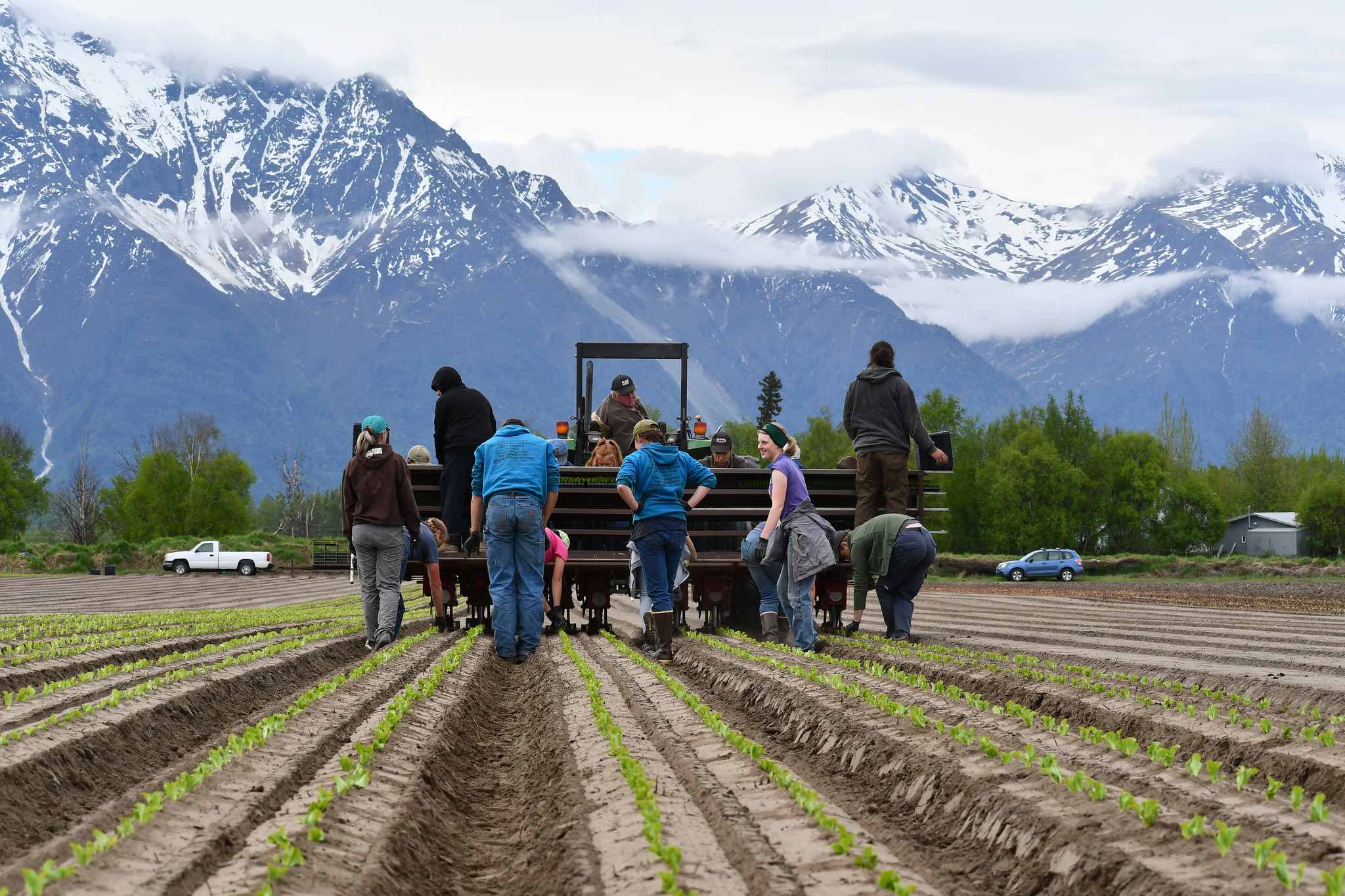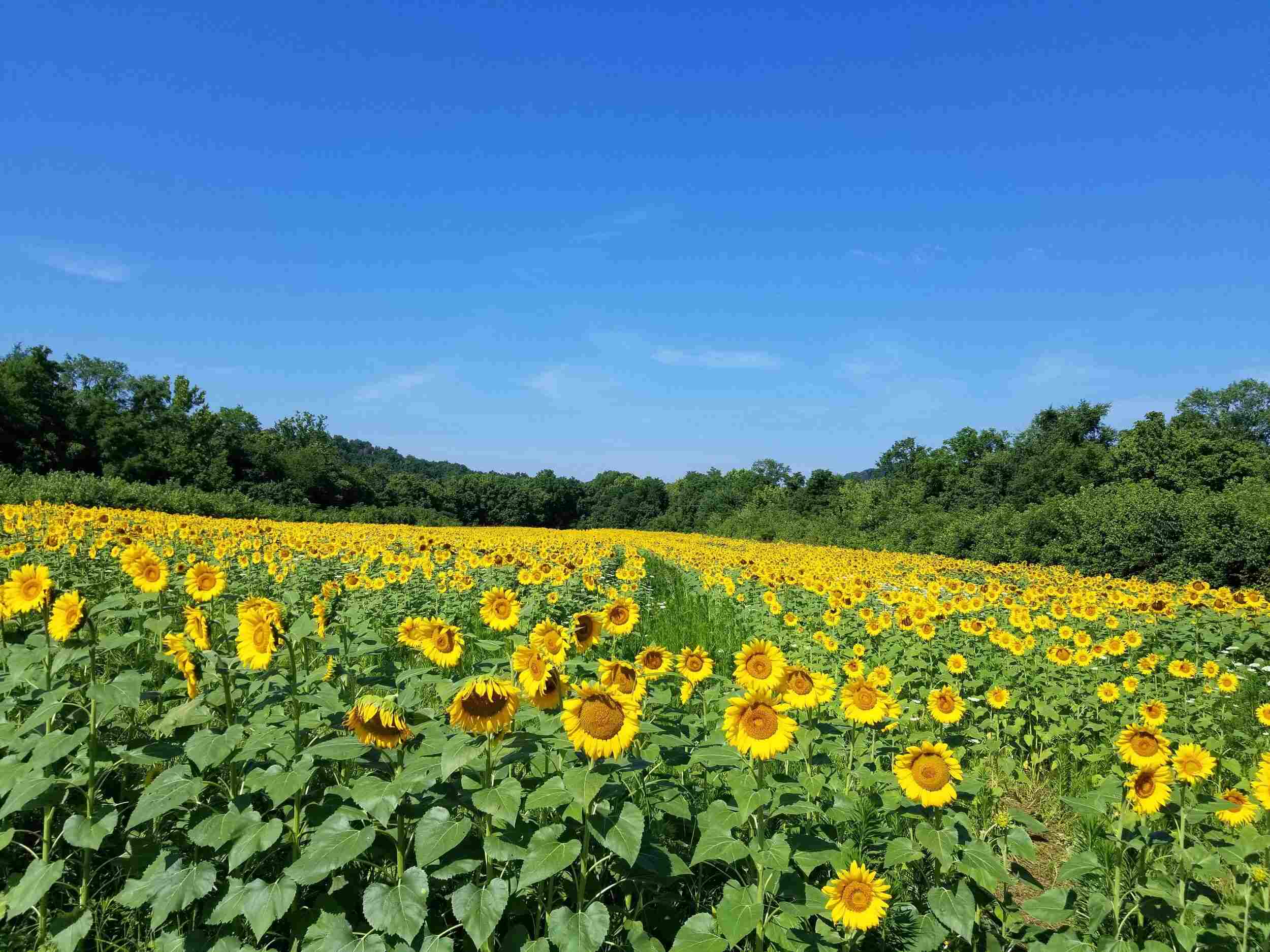Home>Gardening Basics>Understanding Soil>What Planting Zone Is WV
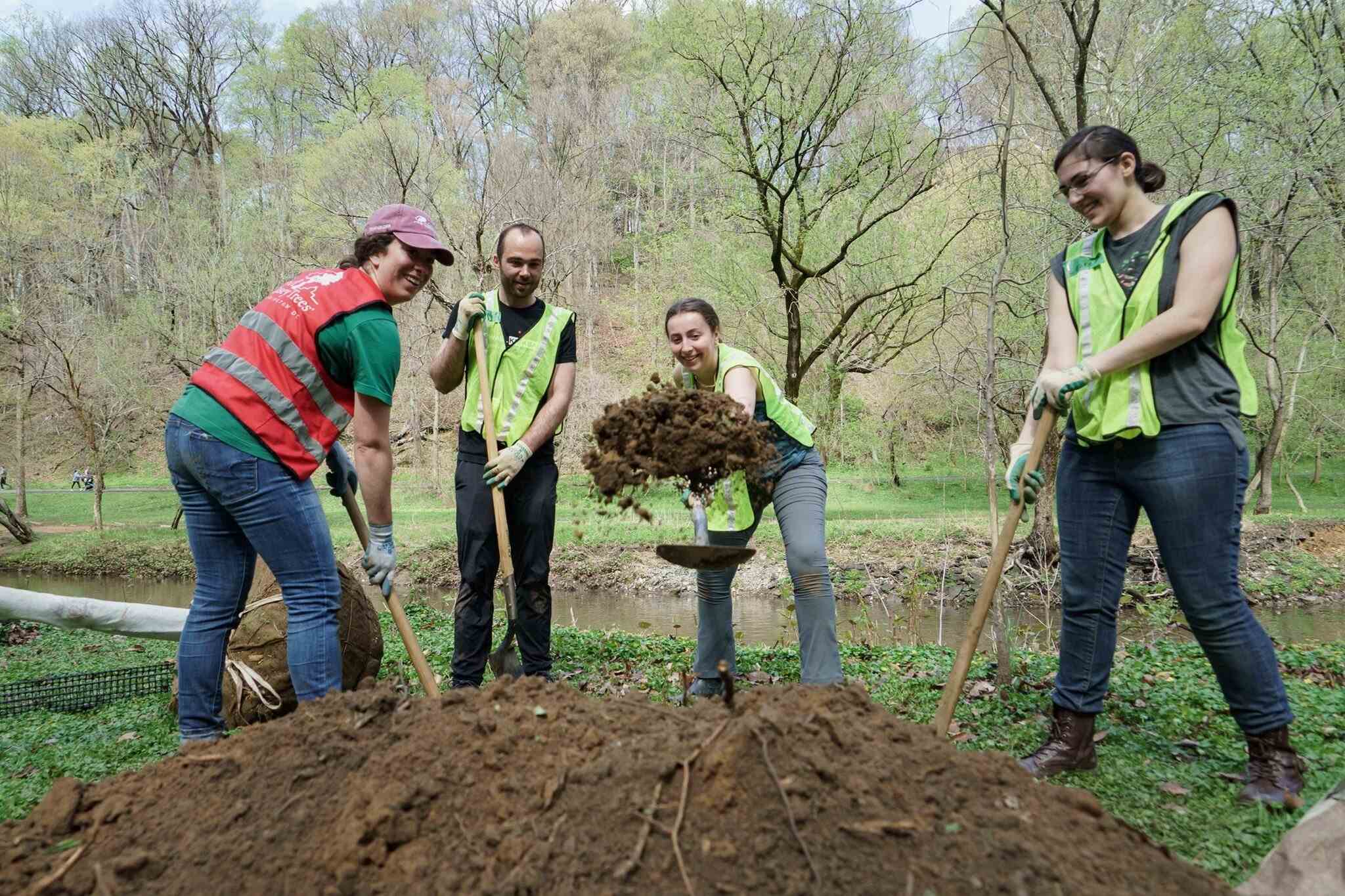

Understanding Soil
What Planting Zone Is WV
Modified: January 22, 2024
Discover the perfect planting zone for West Virginia and gain a deeper understanding of soil composition. Uncover expert tips and techniques for successful gardening in WV.
(Many of the links in this article redirect to a specific reviewed product. Your purchase of these products through affiliate links helps to generate commission for Chicagolandgardening.com, at no extra cost. Learn more)
Table of Contents
- Introduction
- Understanding Planting Zones
- The Importance of Planting Zones in Gardening
- Factors Affecting West Virginia’s Planting Zone
- Determining the Planting Zone for West Virginia
- Common Plants and Crops Suitable for West Virginia’s Planting Zone
- Tips for Successful Gardening in West Virginia’s Planting Zone
- Conclusion
Introduction
Welcome to West Virginia, a state renowned for its natural beauty and lush landscapes. Whether you’re an avid gardener or just have a green thumb, understanding the planting zones in West Virginia is essential for successful gardening. Planting zones are determined based on various factors such as climate, temperature, and growing seasons, and they help gardeners determine what plants will thrive in their specific area.
Gardening is a cherished pastime, and West Virginia’s diverse landscape offers a unique opportunity for residents to cultivate their own oasis. From the rolling hills of the Appalachian Mountains to the rich river valleys, the state’s climate and terrain provide a wide range of planting possibilities.
In this article, we’ll explore the importance of planting zones in gardening, delve into the factors that affect West Virginia’s specific planting zone, and provide valuable insights and tips for successful gardening in the state.
Understanding the planting zones is like having a roadmap for your garden. It provides valuable guidance on what plants are best suited for your area, taking into consideration the specific climate, temperature ranges, and growing seasons. By aligning your gardening efforts with the planting zone, you increase the chances of your plants thriving and producing a bountiful harvest.
Each planting zone is assigned a number based on the average minimum winter temperature in that region. The United States Department of Agriculture (USDA) has divided the country into 13 main planting zones, each designated by a number. These zones serve as a helpful tool for gardeners to select plants that can withstand the typical winter conditions in a specific area.
Understanding Planting Zones
Planting zones provide a standardized system for gardeners to understand the climate and growing conditions of their specific region. These zones are based on the average annual minimum temperature and help gardeners determine the best plant varieties for their area.
The United States Department of Agriculture (USDA) developed the USDA Hardiness Zone Map, which divides the United States and other countries into different zones. Each zone is defined by a range of temperatures that plants can tolerate and thrive in.
Plant hardiness refers to a plant’s ability to survive in a specific temperature range. When selecting plants for your garden, it’s crucial to choose varieties that are well-suited to your planting zone. Plants that are not adapted to your zone may struggle to survive or fail to produce healthy growth.
Planting zones also help gardeners understand the length of the growing season in their area. Some regions have a shorter growing season due to colder temperatures, while others enjoy a longer season with milder weather. By knowing the length of your growing season, you can plan your planting schedule accordingly and make the most of the available time.
Additionally, planting zones serve as a valuable resource for predicting the potential risks and challenges that gardeners may face. For example, if you live in a zone with a short growing season, you may need to start your seeds indoors or use techniques like crop rotation to maximize your harvest.
It’s important to note that planting zones are not the only factor to consider when gardening. Microclimates, which are small areas within a larger climate zone that have unique weather conditions, can also impact plant growth. Factors like altitude, proximity to bodies of water, and sun exposure can create microclimates within a given planting zone. Therefore, it’s beneficial to observe and understand the specific conditions of your garden to make appropriate planting decisions.
To determine your specific planting zone, you can refer to the USDA Hardiness Zone Map. The map is divided into 10-degree Fahrenheit zones, ranging from Zone 1, which has the coldest temperatures, to Zone 13, which has the warmest temperatures. Each zone is further divided into subzones, denoted by letters A and B, which represent 5-degree differences within the 10-degree range.
Understanding planting zones is fundamental to successful gardening. By selecting plants that are well-suited to your zone, you can create a thriving garden that is more resilient to the challenges of your specific climate. So, let’s explore how planting zones play a vital role in West Virginia’s gardening landscape.
The Importance of Planting Zones in Gardening
Planting zones play a crucial role in gardening by providing valuable information about the specific climate and growing conditions of a particular region. Understanding and utilizing planting zones can greatly enhance your gardening success. Here are some reasons why planting zones are important:
Selecting the Right Plants: Planting zones help you choose plants that are well-suited to your area. Different plants have different temperature requirements and tolerance levels. By knowing your planting zone, you can select plants that have a higher chance of thriving in your specific climate conditions. This ensures that your garden will be filled with healthy and vibrant plants.
Optimizing Growing Seasons: Planting zones also provide valuable insights into the length of the growing season in your area. This information allows you to plan your planting schedule more effectively, making the most of the available time. Gardeners in regions with shorter growing seasons may choose to start seeds indoors or utilize season extension techniques, while those in longer growing seasons may have the opportunity to grow multiple crops throughout the year.
Preventing Plant Stress and Failure: Planting outside of your designated zone can lead to stress and failure for your plants. If a plant is exposed to temperatures that are too extreme for its tolerance level, it may suffer from stunted growth, disease susceptibility, or even death. By planting within your recommended zone, you can provide optimal growing conditions for your plants and minimize the risk of plant stress and failure.
Maximizing Productivity: Planting in the right zone increases the productivity of your garden. When plants are grown in their preferred conditions, they are more likely to produce abundant yields of fruits, vegetables, or flowers. By choosing plants that are adapted to your zone, you can enjoy a bountiful harvest and a thriving garden.
Efficient Resource Management: Understanding your planting zone helps you make efficient use of resources such as water, fertilizers, and pest control. By selecting plants that are well-suited to your climate, you can minimize water waste and reduce the need for excessive pesticide applications. This promotes sustainable gardening practices and reduces your environmental impact.
Overall, planting zones are essential tools for gardeners to make informed decisions about plant selection, planting schedules, and resource management. By utilizing planting zones, you can create a resilient and flourishing garden that is well-adapted to the unique climate of your area.
Factors Affecting West Virginia’s Planting Zone
Several factors contribute to the specific planting zone of West Virginia. Understanding these factors can provide valuable insights into the unique climate and growing conditions of the state. Here are some of the key factors that influence West Virginia’s planting zone:
Latitude and Elevation: West Virginia’s latitude and elevation have a significant impact on its planting zone. The state is located between approximately 37°N to 40.5°N latitude, which places it in a temperate climate zone. Higher elevations, such as in the Appalachian Mountains, generally experience cooler temperatures and shorter growing seasons compared to lower elevations.
Topography and Terrain: The diverse topography and terrain of West Virginia contribute to variations in its microclimates. Valleys and river basins tend to have milder temperatures and longer growing seasons compared to higher elevations and ridge tops. The presence of water bodies also influences the local climate, providing additional warmth and moisture to certain areas.
Climate Patterns: West Virginia experiences a humid continental climate, characterized by four distinct seasons. Summers are generally warm and humid, while winters can be cold with occasional heavy snowfall. The state also receives a moderate amount of rainfall throughout the year, which is important for plant growth and development.
Temperature Extremes: West Virginia is susceptible to temperature extremes, with both hot summers and cold winters. Depending on the region, winter temperatures can drop below freezing for extended periods, affecting the hardiness of plants. Conversely, summer temperatures can rise above 90°F (32°C), placing certain plants at risk of heat stress.
Frost Dates: The last expected spring frost and the first autumn frost are crucial factors for determining the length of the growing season. West Virginia’s planting zone is influenced by its average frost dates, with earlier frost dates in northern regions and higher elevations. Gardeners must take into consideration these frost dates when planning their planting schedules.
Soil Composition and Quality: The type and quality of soil in West Virginia can vary across different regions. Soil composition affects water drainage, nutrient availability, and overall plant health. Understanding the soil characteristics in your specific area is vital for selecting plants that are well-suited to the soil conditions and making necessary amendments to improve soil fertility.
These factors, among others, contribute to West Virginia’s diverse planting zones. It’s essential for gardeners to consider these factors when selecting and growing plants to ensure successful gardening in the state.
Determining the Planting Zone for West Virginia
Determining the specific planting zone for West Virginia is essential for selecting plants that will thrive in the state’s unique climate. The United States Department of Agriculture (USDA) Hardiness Zone Map is a valuable tool that can help you identify your planting zone. Here’s how you can determine the planting zone for West Virginia:
1. Refer to the USDA Hardiness Zone Map: The USDA Hardiness Zone Map divides the United States into different planting zones based on the average minimum winter temperature. Each zone is assigned a number, with Zone 1 being the coldest and Zone 13 being the warmest. Locate West Virginia on the map to identify the zone range that applies to the state.
2. Consider the Subzones: Within each zone, there are subzones denoted by letters A and B, representing 5-degree Fahrenheit temperature differences. Subzones provide a more precise indication of the temperatures plants can tolerate. Identify whether your location falls under the A or B subzone within the overall zone range for West Virginia.
3. Check Online Resources: Several online resources provide interactive versions of the USDA Hardiness Zone Map, allowing you to enter your specific location to determine your planting zone. These resources often provide additional information such as average frost dates, growing season length, and specific plant recommendations for your zone in West Virginia.
4. Consult Local Garden Centers and Cooperative Extension Offices: Local garden centers and cooperative extension offices are excellent resources for determining the planting zone specific to your area within West Virginia. They have experts who are familiar with the local climate and can provide guidance on suitable plant varieties and gardening practices.
5. Consider Microclimates: While the USDA Hardiness Zone Map is a valuable tool, it’s important to consider microclimates within your specific location. Factors such as proximity to bodies of water, altitude, and sun exposure can create variations in temperature and growing conditions. Observe your garden and surrounding areas to identify any microclimates that may influence plant growth.
By determining your planting zone in West Virginia, you can make informed decisions about plant selection, timing of planting, and overall garden management. This ensures that you choose plants that are well-suited to your specific climate and maximize your gardening success.
Common Plants and Crops Suitable for West Virginia’s Planting Zone
West Virginia’s planting zone offers a diverse range of plants and crops that are well-suited to the state’s climate and growing conditions. Here are some common plants and crops that thrive in West Virginia’s planting zone:
1. Tomatoes: Tomatoes are a popular choice for gardeners in West Virginia. They thrive in the state’s warm summers and can be grown in both backyard gardens and containers. Varieties such as ‘Big Boy’, ‘Roma’, and ‘Cherry’ are known to perform well in West Virginia’s planting zone.
2. Peppers: Peppers, both sweet and hot varieties, are suitable for West Virginia’s planting zone. Bell peppers, jalapeños, and serrano peppers are commonly grown in the state. They appreciate the warm temperatures and longer growing season.
3. Beans: Beans, including both bush and pole varieties, are well-suited to West Virginia’s planting zone. Green beans, kidney beans, and lima beans thrive in the state’s moderate temperatures and adequate rainfall.
4. Lettuce and Leafy Greens: Lettuce, spinach, kale, and other leafy greens can be grown in West Virginia. These cool-season crops are ideal for spring and fall plantings when temperatures are milder. Some varieties can even withstand colder temperatures in the winter months.
5. Squash and Zucchini: Squash and zucchini are warm-season vegetables that do well in West Virginia’s planting zone. Varieties such as ‘Yellow Crookneck’, ‘Butternut’, and ‘Zucchini’ are known to produce abundant harvests in the state’s fertile soil.
6. Blueberries: Blueberries thrive in West Virginia’s planting zone, particularly in acidic soil. They appreciate the state’s ample rainfall and moderate temperatures. Varieties like ‘Bluecrop’ and ‘Jersey’ are popular choices for home gardeners.
7. Apple Trees: West Virginia’s planting zone is conducive to growing apple trees. Varieties like ‘Golden Delicious’, ‘Granny Smith’, and ‘Red Delicious’ have been successfully cultivated in the state. They require well-drained soil and adequate chilling hours during the winter.
8. Flowers: Many flowers thrive in West Virginia’s planting zone, adding beauty to gardens and landscapes. Some popular flower choices include tulips, daffodils, marigolds, petunias, and zinnias. These flowers provide vibrant colors and can be easily grown from bulbs or seeds.
These are just a few examples of the wide range of plants and crops that can be grown in West Virginia’s planting zone. It’s important to consider factors such as specific microclimates, soil conditions, and individual preferences when selecting plants for your garden. Consulting local gardening resources and experienced growers can further help you identify suitable plants and crops for successful gardening in West Virginia.
Tips for Successful Gardening in West Virginia’s Planting Zone
Gardening in West Virginia’s planting zone can be a rewarding and fruitful experience when you take into account the unique climate and growing conditions. Here are some valuable tips for successful gardening in West Virginia:
1. Know Your Frost Dates: Understanding the average last spring frost date and first autumn frost date is crucial for timing your planting. Consult local resources or use online tools to determine the appropriate planting times for different crops in your specific area.
2. Soil Preparation: Invest time in preparing your soil before planting. Test the soil pH and make necessary adjustments to ensure optimal nutrient availability. Incorporate organic matter, such as compost or well-rotted manure, to improve soil structure and fertility.
3. Watering: Provide consistent and adequate moisture to your plants. Water deeply but less frequently to encourage deep root growth. Consider using mulch around plants to help retain soil moisture and prevent weed growth.
4. Pest and Disease Management: Stay vigilant in monitoring pests and diseases in your garden. Use integrated pest management techniques, such as handpicking pests, introducing beneficial insects, and using organic pest control methods when necessary. Regularly inspect plants for any signs of disease and take appropriate action to prevent further spread.
5. Crop Rotation: Practice crop rotation to prevent the buildup of pests and diseases in your soil. Avoid planting related crops in the same area year after year. Instead, rotate crops to different sections of your garden to maintain soil health and reduce the risk of plant-specific issues.
6. Use Shade and Wind Protection: West Virginia’s planting zone experiences both hot summers and cold winters. Consider providing shade in the summer months to protect sensitive plants from scorching heat. Similarly, provide windbreaks or use row covers in the winter to shield plants from harsh winds and freezing temperatures.
7. Extend the Growing Season: Take advantage of West Virginia’s moderate climate to extend your growing season. Use techniques like cold frames, hoop houses, or row covers to protect plants from early and late-season frost, allowing you to enjoy fresh produce for a longer period.
8. Explore Native Plants: Incorporate native plants into your garden to enhance biodiversity and support local ecosystems. Native plants are well-adapted to West Virginia’s environmental conditions and often require less maintenance and resources compared to non-native species.
9. Continuous Learning: Gardening is a lifelong learning process. Stay curious and keep expanding your knowledge by attending workshops, joining gardening groups, and seeking advice from experienced local gardeners. They can provide valuable insights tailored to West Virginia’s unique gardening challenges.
By following these tips, you can increase your chances of gardening success in West Virginia’s planting zone. Embrace the joys and challenges of gardening, adapt to its ever-changing nature, and watch your garden thrive in the beautiful landscapes of the state.
Conclusion
Gardening in West Virginia’s planting zone offers a wealth of opportunities to cultivate a vibrant and abundant garden. By understanding the importance of planting zones and considering the various factors that affect West Virginia’s specific zone, gardeners can make informed decisions and create a thriving garden that is well-adapted to the region’s unique climate.
Planting zones serve as valuable guides for selecting plants, optimizing growing seasons, and preventing stress and failure. By choosing plants suited to your planting zone and considering microclimates, you can enhance the productivity of your garden and efficiently manage resources.
In West Virginia’s planting zone, a wide range of plants and crops thrives. From tomatoes and peppers to blueberries and apple trees, there are many options to choose from. Taking into account specific planting recommendations and considering individual preferences will help yield a successful and fulfilling garden.
With the tips provided, you can further enhance your gardening experience in West Virginia’s planting zone. From understanding frost dates and soil preparation to managing pests and diseases and exploring native plants, these strategies will help you navigate the unique challenges and opportunities presented by West Virginia’s climate.
Remember, gardening is a continuous learning process. As you embark on your gardening journey in West Virginia, reach out to local resources, connect with experienced gardeners, and embrace the joy of cultivating and nurturing your garden.
So get your hands dirty, savor the beauty of West Virginia’s landscapes, and enjoy the bountiful harvests that await you in your flourishing garden.
